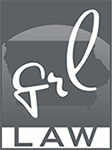What good is an administrative agency if it does not perform one of the primary functions that it is created to perform?
In just the past couple of years, the Des Moines metro area has seen a number of fatal or serious injury accidents involving emergency medical response services. They have included police officers, fire departments and ambulance services. Some have garnered more attention than others and blame has been cast in a bevy of different directions. One agency up until now however, has avoided any such blame. The Iowa Department of Public Health.
Since its creation, the Iowa Department of Public Health has been granted the authority to develop and implement rules and regulations regarding the creation, licensing, certification, and regulation of emergency medical services throughout the State of Iowa. Among these responsibilities has always been the promulgation of rules and regulations surrounding the training and certification of emergency response personnel that will be operating emergency response vehicles. These vehicles, which weigh more than any normal civilian non-commercial vehicle on the road (fully loaded ambulance can weigh over 5 tons and a fire truck can weigh much more than that), are driven at high rates of speed with the legal authority to disregard traffic control devices and other rules of the road. It would seem logical that as a consequence of the potentially dangerous conditions under which these vehicles are operated, extensive training and grueling certification procedures would be in required, much like those required for individuals that operate commercial vehicles. One would think that to be the case but unfortunately it is not. As it currently stands, from a strictly legal standpoint, the operator of an emergency vehicle must only be a licensed driver in the State of Iowa and received some type of emergency driving techniques training.
Just this past year, the lawyers here at GRL Law made a public records request to the Iowa Department of Public Health, Bureau of Emergency Medical Services for "all written rules and regulations promulgated by either the Iowa Department of Public Health or the Bureau of Emergency Medical Services," relating to the safe operation of an ambulance. In response, the Regulation Manager provided us with a copy of the applicable Administrative Code chapters with specific reference to Iowa Administrative Code section 641-132.8(1)(c)(2) and 132.8(6)(b). We found the contents of these "regulations" to be disturbingly vague and impotent.
Section 132.8(1)(c)(2) simply requires that an ambulance be staffed with "one currently licensed driver" and that the service provider must document each driver's training in "emergency driving techniques." Section 132.8(6)(b) merely required the reporting of any accidents involving an emergency response vehicle. There were and currently are no specific requirements for training, proficiency testing prior or other qualifications for an individual to operate an emergency vehicle in the State of Iowa.
As the law is written currently, there are no legally enforceable requirements for an individual to operate an emergency response vehicle other than that they be a licensed driver in the State and have receive some unspecified sort of "emergency driving techniques" training. The one government administrative agency that was and is charged with the authority and duty to set forth those standards has been asleep at the wheel for decades in this regard. Only recently has the Bureau awoke and decided to adopt and implement training and certification requirements for emergency response vehicle drivers. Just recently, the Public Health Department issued a Notice of Intended Action in which they propose to specify the requirements of emergency driving technique training. Under the proposed rule, the new training requirements must include the following:
1. Review of Iowa laws regarding emergency vehicle operations.
2. A review of the service program's driving policy for first response vehicles, ambulances, rescue vehicles or personal vehicles of an emergency medical care provider responding as a member of the service. The policy shall include, as a minimum:
* Frequency and content of driver's training requirements.
* Criteria for response with lights or sirens or both.
* Speed limits when responding with lights or sirens or both.
* Procedure of approaching intersections with lights or sirens or both.
* Notification process in the event of a motor vehicle collision involving a first response vehicle, ambulance, rescue vehicle or personal vehicle of an emergency medical care provider responding as a member of the service.
AND
3. Behind the wheel driving of the service's first response vehicles, ambulances and rescue vehicles.
(ARC7170B)
If these new proposed rules go into effect there will be the long needed requirements and guidance to local agencies for the specific training requirements of their emergency response vehicle operators. While many may argue that these proposed guidelines do not go far enough and that an actual licensing endorsement such as found with commercial motor vehicles would be more appropriate, it is a start non-the-less. It is unfortunate that it took these recent tragedies to awaken the Public Health Department leaving the emergency response services that risk their lives on a daily basis to keep us all safe, in the dark as to what was and is expected of them. How can the emergency response providers be expected to comply with non-existent guidelines and protocols? While blame for some of these incidents may be cast about, let us not forget that there were bureaucrats in an administrative agency charged with the specific task of developing and enforcing safety requirements that very well may have prevented any one of these tragedies, who failed to comply with their legally required duties. While we are playing the blame game, how about a little administrative accountability for once?

